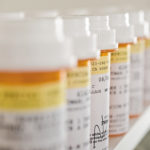 The new Director of the U.S. Patent and Trademark Office (USPTO), Katherine Vidal, published a stern reminder regarding the duties of disclosure and reasonable inquiry during examination of a patent application, including reexamination, reissue, and proceedings before the Patent Trial and Appeal Board (PTAB) (87 FR 45764 (July 29, 2022)). The justification was to provide examiners and judges with all the material information needed to decide on patentability of a claimed invention. According to the USPTO, more robust and reliable patents should result, which is better for the public. See USPTO Publishes Notice Calling Out Pharmaceutical Industry, Goodwin Life Sciences Perspective blog, August 1, 2022.
The new Director of the U.S. Patent and Trademark Office (USPTO), Katherine Vidal, published a stern reminder regarding the duties of disclosure and reasonable inquiry during examination of a patent application, including reexamination, reissue, and proceedings before the Patent Trial and Appeal Board (PTAB) (87 FR 45764 (July 29, 2022)). The justification was to provide examiners and judges with all the material information needed to decide on patentability of a claimed invention. According to the USPTO, more robust and reliable patents should result, which is better for the public. See USPTO Publishes Notice Calling Out Pharmaceutical Industry, Goodwin Life Sciences Perspective blog, August 1, 2022.
The USPTO now published a Request for Comments (RFC) (87 FR 60130 (October 4, 2022)) on USPTO initiatives to ensure “robustness and reliability” of patent rights, the new buzz words for increased patent quality. Again, the pharmaceutical industry appears to be the main target of the new initiatives. In the background section is President Biden’s Competition Executive Order (EO) that calls for action “to help ensure that the patent system, while incentivizing innovation, does not unjustifiably delay generic drug or biosimilar competition beyond that reasonably contemplated by applicable law.” The RFC also references the Food and Drug Administration and USPTO interactions and communications to help promote the EO.
In particular, the new initiatives for “robust and reliable” patents are primarily directed to preventing what’s been termed, “patent thickets,” which has been defined by Senators Leahy, Blumenthal, Klobuchar, Cornyn, Collins and Braun as a “large number of patents that cover a single product or minor variations on a single product.” According to the Senators, patent thickets impede the generic drug industry to the detriment of the U.S. public.
Included in the new USPTO initiatives to execute the EO are more time and resources to examine patent applications, enhanced processes for information disclosure statements and the identification of key prior art, consideration of applying greater scrutiny to continuation patent applications and use of declaratory evidence during patent prosecution, revisiting terminal disclaimer practice and procedures for third party input during prosecution, and a comparative analysis of the prosecution and grant of “pharmaceutical and biological patents” in the United States versus other countries.
The stated primary purpose of this RFC is to solicit comments from the public on these initiatives, the latter of which is specific to the pharmaceutical industry. Of note, though, the specific topics and initiatives currently being addressed in the RFC are prior art searching, e.g., databases of non-patent literature, support for patent claims in continuation patent applications including priority dates, request for continued examination (RCE) practice, and restriction, divisional, and terminal disclaimer practices.
The RFC includes a list of eleven questions. The first five, some with many subparts, address the USPTO topics and initiatives discussed immediately above. The final six questions are directly from a letter from the Senators to the USPTO. These latter questions are quite enlightening as to what’s in the minds of the Senators and their possible solutions to their perceived problems with the U.S. patent system.
More specifically, the Senators question terminal disclaimer practice, suggesting eliminating it to prohibit patents that are obvious variants. Another question suggests that patents terminally disclaimed over each other should stand or fall together with respect to their validity because they are all obvious variants of each other. Other questions lean towards higher scrutiny and examination of continuation patent applications including limiting the time frame when such applications can be filed and increasing the fees for such filings.
Although the specific questions posed do not single out patents of the pharmaceutical industry nor include a comparison of such patents to non-U.S. counterpart patents, the incentive for the RFC, which typically precedes a notice of proposed rulemaking, seems to signal an attempt to change the current patent practices of the pharmaceutical industry.
In sum, similar to the USPTO Notice on disclosure requirements, although all technologies are included, the RFC appears to be directed most specifically to brand name pharmaceutical companies. Is the RFC another a shot over the bow of the brand name pharmaceutical companies’ patent filing and prosecution strategies? Is this more signaling of the beginning of higher scrutiny for their patent applications and the “patent thickets” they create? If so, will such scrutiny permit generics to enter the marketplace earlier, to meet the Administration’s objectives? Again, only time will tell.
 Recent merger enforcement in the pharmaceutical space continues to follow traditional principles and modes of analysis. However, with a new 3-to-2 Democratic majority, it is increasingly likely that the Federal Trade Commission’s enforcement actions will reflect more aggressive theories that were previously advocated only in dissenting statements. Recent behavioural enforcement has largely consisted of pay-for-delay litigation and continuing prosecution of price-fixing charges against generic manufacturers. However, the FTC seems poised to open a new front of enforcement as it has given strong indications that it has competitive concerns with fees and rebates paid by pharmaceutical manufacturers to pharmacy benefit managers and is looking to take related enforcement action in the near future. Antitrust & Competition co-chairs Arman Oruc and Andrew Lacy, counsel Elliot Silver, and associate Brady Cummins explain more in United States: FTC Looks Set to Open Up New Enforcement Front. The whole publication is available here.
Recent merger enforcement in the pharmaceutical space continues to follow traditional principles and modes of analysis. However, with a new 3-to-2 Democratic majority, it is increasingly likely that the Federal Trade Commission’s enforcement actions will reflect more aggressive theories that were previously advocated only in dissenting statements. Recent behavioural enforcement has largely consisted of pay-for-delay litigation and continuing prosecution of price-fixing charges against generic manufacturers. However, the FTC seems poised to open a new front of enforcement as it has given strong indications that it has competitive concerns with fees and rebates paid by pharmaceutical manufacturers to pharmacy benefit managers and is looking to take related enforcement action in the near future. Antitrust & Competition co-chairs Arman Oruc and Andrew Lacy, counsel Elliot Silver, and associate Brady Cummins explain more in United States: FTC Looks Set to Open Up New Enforcement Front. The whole publication is available here. On September 28, 2022, the U.S. Food and Drug Administration (“FDA” or “the Agency”) issued its long-awaited final guidance, “Clinical Decision Support Software” (the “CDS Guidance”). The CDS Guidance follows the Agency’s September 2019 draft guidance of the same name (the “Draft Guidance”) and seeks to clarify several key concepts for determining whether clinical decision support (“CDS”) software is a medical device.
On September 28, 2022, the U.S. Food and Drug Administration (“FDA” or “the Agency”) issued its long-awaited final guidance, “Clinical Decision Support Software” (the “CDS Guidance”). The CDS Guidance follows the Agency’s September 2019 draft guidance of the same name (the “Draft Guidance”) and seeks to clarify several key concepts for determining whether clinical decision support (“CDS”) software is a medical device. The new Director of the U.S. Patent and Trademark Office (USPTO), Katherine Vidal, published a stern reminder regarding the duties of disclosure and reasonable inquiry during examination of a patent application, including reexamination, reissue, and proceedings before the Patent Trial and Appeal Board (PTAB) (87 FR 45764 (July 29, 2022)). The justification was to provide examiners and judges with all the material information needed to decide on patentability of a claimed invention. According to the USPTO, more robust and reliable patents should result, which is better for the public.
The new Director of the U.S. Patent and Trademark Office (USPTO), Katherine Vidal, published a stern reminder regarding the duties of disclosure and reasonable inquiry during examination of a patent application, including reexamination, reissue, and proceedings before the Patent Trial and Appeal Board (PTAB) (87 FR 45764 (July 29, 2022)). The justification was to provide examiners and judges with all the material information needed to decide on patentability of a claimed invention. According to the USPTO, more robust and reliable patents should result, which is better for the public.